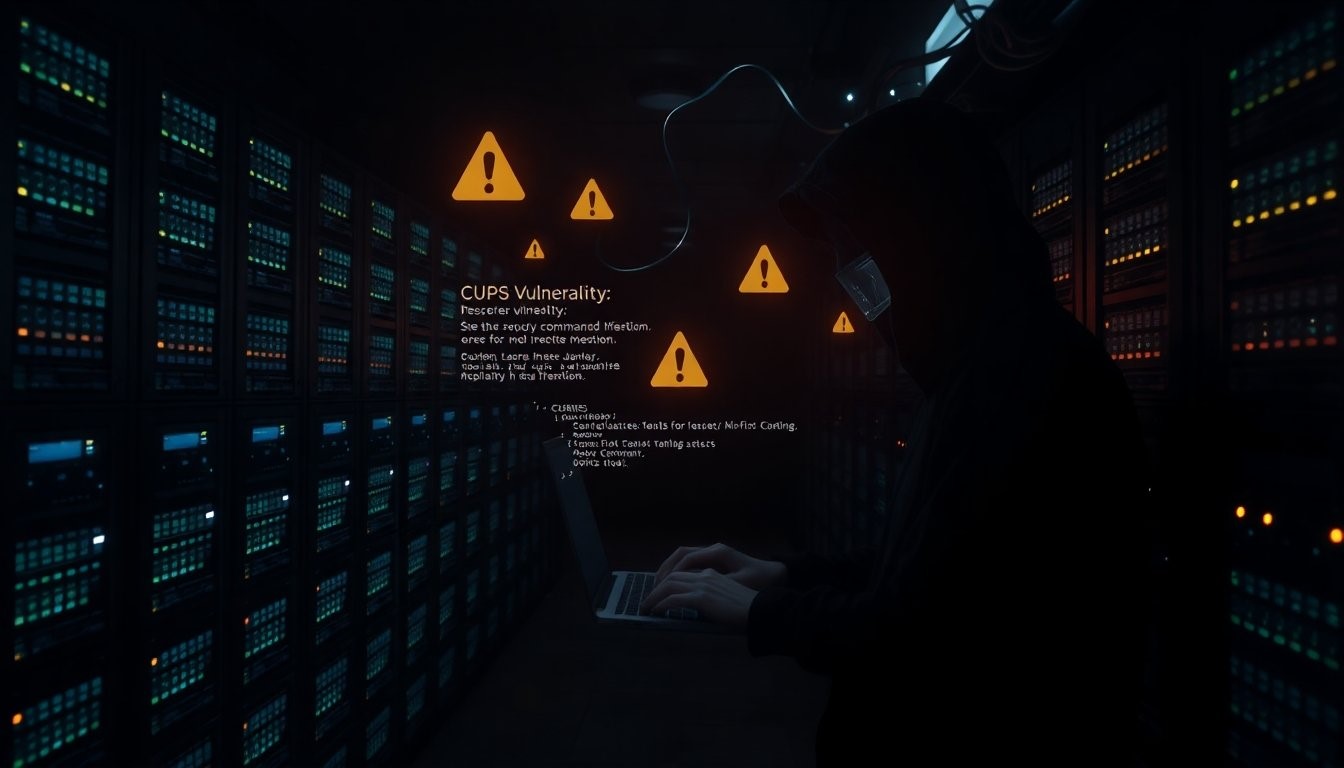Recently, a set of security vulnerabilities affecting the Common Unix Printing System (CUPS) in Linux systems was disclosed, sparking widespread attention. These vulnerabilities potentially allow unauthenticated remote attackers to execute malicious commands under certain conditions, leading to serious remote command execution (RCE) issues. This article will delve into the details of these vulnerabilities, their impact, and prevention recommendations.
Background of the CUPS System
CUPS is a standards-based, open-source printing system widely used on Linux and other Unix-like operating systems, such as ArchLinux, Debian, Fedora, Red Hat Enterprise Linux (RHEL), ChromeOS, FreeBSD, NetBSD, OpenBSD, openSUSE, and SUSE Linux. As the core printing service in Unix/Linux systems, the security of CUPS is critical. If compromised, malicious code may execute on the infected system with the privileges of the printing service user, posing a threat to system security.
Details of the Newly Disclosed Vulnerabilities
- CVE-2024-47176 - Trust Issue with UDP Port The vulnerability in the
cups-browsedcomponent allows the system to accept packets from any source on UDP INADDR_ANY:631 and operate on malicious URLs through Get-Printer-Attributes IPP requests. This means attackers can replace existing IPP URLs or add new printers via forged URLs, potentially executing malicious commands. - CVE-2024-47076 - Lack of IPP Attribute Validation The
cfGetPrinterAttributes5function inlibcupsfiltersfails to validate the attributes returned by the IPP server, allowing attackers to supply malicious data to the CUPS system by forging IPP attributes, compromising system security. - CVE-2024-47175 - PPD File Injection
libppdfails to adequately validate IPP attributes when writing to temporary PPD files, enabling attackers to inject malicious IPP attributes into the generated PPD file, potentially manipulating system behavior. - CVE-2024-47177 - Arbitrary Command Execution via foomatic-rip The
foomatic-ripcomponent incups-filtersallows attackers to execute arbitrary commands through PPD parameters, further increasing an attacker's control over the system.
Potential Impact of the Vulnerabilities
The greatest risk posed by these vulnerabilities is their potential for chained exploitation, allowing attackers to create malicious printers on exposed Linux systems and trigger remote code execution when sending print jobs. Affected systems may face the risk of sensitive data leaks and the disruption of critical production systems.
However, security researchers have noted that the actual threat posed by these vulnerabilities is limited. Ontinue, a cybersecurity firm, identified that the root cause lies in how cups-browsed improperly handles new printer announcements and the CUPS system's inadequate validation of malicious printing resources. Additionally, Rapid7 emphasized that attacks are only possible if UDP port 631 is open and vulnerable services are running.
It's important to note that RHEL mentioned in its advisory that, although all versions are affected by these vulnerabilities, systems with default configurations are not easily exploitable, hence marking the severity of the vulnerability as "important."
Prevention Recommendations
Given the potential dangers of these vulnerabilities, system administrators should take the following preventive measures:
- Disable the
cups-browsedService: If the service is not needed, it is recommended to immediately disable and remove thecups-browsedservice. - Restrict Traffic on UDP Port 631: Use a firewall to block or limit external access to UDP port 631, preventing malicious attackers from infiltrating the system through this port.
- Promptly Install Patches: Patches for these vulnerabilities are expected to be released in the coming days. Administrators should closely monitor relevant advisories and apply patches as soon as possible to address the vulnerabilities.
- Strengthen Network Protection: Ensure that only trusted devices and users have access to the network where the CUPS service resides. Enable intrusion detection and prevention systems to monitor potential malicious activity in real time.
Conclusion
While these CUPS vulnerabilities have not reached the scale of threats like Log4Shell or Heartbleed, they still pose a security risk to Linux systems running CUPS. Given the complexity of modern network environments and attackers' ongoing search for new vulnerabilities, organizations should take proactive measures to ensure their systems are protected from potential attacks.
As patches are released, the threat posed by these vulnerabilities will gradually diminish, but until then, administrators must remain vigilant and implement effective measures to maintain system security.





